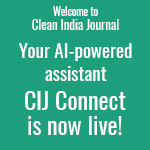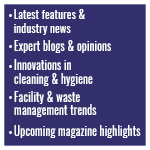
In the ever-evolving landscape of food processing and safety, the significance of maintaining impeccable cleanliness reverberates across the entire supply chain. This blog will delver into the substantial ways in which cleaning and hygiene solutions influence the food industry, ensuring compliance, and prioritizing the health and satisfaction of consumers.
- Compliance with Rigorous Regulations: In recent times, regulatory bodies have intensified their focus on food safety standards, necessitating stringent adherence to hygiene protocols. Cleaning and hygiene solutions take center stage in assisting food processing units in meeting these standards. From sanitation practices to the use of antimicrobial agents, these solutions play a pivotal role in ensuring that food products are produced in environments that meet or exceed regulatory requirements.
- Prevention of Contamination: Contamination poses a significant threat in the food industry, capable of jeopardizing public health and staining the reputation of businesses. Cleaning solutions, including disinfectants and sanitizers, act as sentinels against harmful pathogens, bacteria, and allergens. Implementing robust cleaning practices minimizes the risk of cross-contamination, safeguarding both the integrity of the food and the well-being of consumers.
- Extended Shelf Life and Quality Assurance: The utilization of advanced cleaning technologies contributes to extending the shelf life of food products. By eradicating contaminants and maintaining hygienic processing environments, cleaning solutions ensure that the quality and freshness of products are preserved. This not only aligns with consumer expectations but also diminishes waste in the supply chain.
- Enhanced Operational Efficiency: Efficiency is the cornerstone of any thriving food processing operation. Cleaning and hygiene solutions streamline processes by creating cleaner, more organized facilities. This not only reduces downtime associated with deep cleaning but also heightens the overall efficiency of the production line, contributing to increased output and profitability.
- Consumer Trust and Brand Reputation: Today’s consumer is discerning, placing a premium on food safety and transparency. Food processing companies that prioritize hygiene and cleanliness are better positioned to earn and maintain consumer trust. A positive brand reputation built on the foundation of stringent hygiene practices can be a powerful differentiator in a competitive market.
- Adaptation to Emerging Challenges: As the food industry evolves, so do the challenges it faces. Cleaning and hygiene solutions must adapt to emerging threats, such as new strains of bacteria or viruses. Continuous innovation in cleaning technologies allows the industry to stay one step ahead of potential risks, ensuring that food safety practices remain at the forefront of operations.
In the intricate web of food processing and safety, the impact of cleaning and hygiene solutions is undeniably profound. These solutions not only ensure compliance with regulations but also safeguard the health and satisfaction of consumers. As the industry continues to advance, the role of cleaning and hygiene will remain central to building a resilient and responsible food supply chain. In essence, the cleanliness of today paves the way for the safety and success of tomorrow’s food industry.

























 CIJConnect Bot-enabled WhatsApp
CIJConnect Bot-enabled WhatsApp








